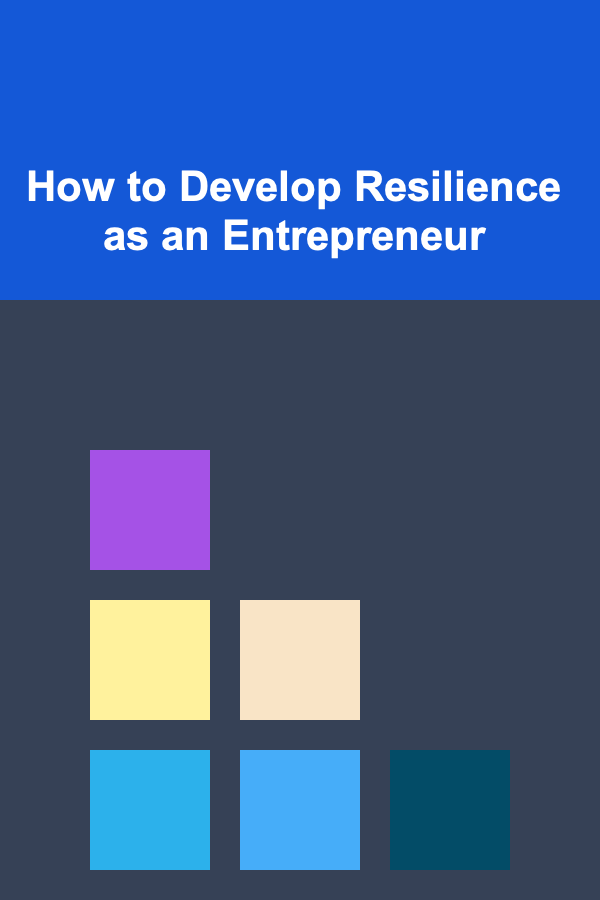
How to Create a Worldbuilding Planner for Fantasy Writers
ebook include PDF & Audio bundle (Micro Guide)
$12.99$7.99
Limited Time Offer! Order within the next:
Not available at this time

Fantasy writing is a creative endeavor that involves constructing entirely new worlds, societies, and systems. Whether you're building a sprawling epic with intricate politics and magical systems or a smaller, more intimate setting, the key to a compelling fantasy story is a well-developed world. This is where worldbuilding comes into play---it's the process of creating the various elements of your fictional world, ensuring they are consistent, immersive, and engaging for your readers.
For fantasy writers, having a structured approach to worldbuilding can make the process less overwhelming and more rewarding. A worldbuilding planner is a tool that helps you organize and track the different components of your world, ensuring that every detail serves a purpose and contributes to the overall narrative. In this article, we will explore how to create a worldbuilding planner that works for you, providing a comprehensive roadmap for your fantasy writing journey.
1. Understanding the Role of Worldbuilding in Fantasy Writing
Before diving into the specifics of creating a worldbuilding planner, it's important to understand why worldbuilding is so critical for fantasy writers. Fantasy worlds are often vastly different from our own, with different laws of nature, magic systems, histories, and societies. Without careful worldbuilding, these elements can become inconsistent or confusing to the reader. A solidly constructed world not only makes your story more immersive but also enhances the depth and richness of the plot and characters.
Worldbuilding serves several functions:
- Setting the Stage: It defines where and when your story takes place, creating a backdrop that shapes the events of the plot.
- Building Atmosphere: The world's aesthetics, culture, and tone influence the mood and themes of your narrative.
- Establishing Rules: It lays down the rules of the world, including how magic works, how politics operate, and how societies are structured.
- Creating Conflict: The world itself can act as a source of conflict, whether it's through environmental challenges, societal pressures, or political struggles.
Having a worldbuilding planner allows you to structure all these aspects and keep track of them as your story progresses.
2. Deciding on the Scope of Your World
The first step in creating a worldbuilding planner is to decide on the scope of your world. How large is it? What level of detail do you want to go into? The scale of your world will impact how much time and effort you need to dedicate to building it.
Types of Worlds:
- Small and Intimate: A world that is limited to a single town, village, or kingdom. The focus is on a small cast of characters and a tight narrative.
- Large and Expansive: A world with multiple continents, nations, and cultures. It may involve complex geopolitics, magical systems, and historical conflicts.
- High Fantasy vs. Low Fantasy: A high-fantasy world often includes magic, fantastical creatures, and epic adventures, whereas a low-fantasy world may be more grounded and realistic, with only slight touches of magic or supernatural elements.
The scope of your world will help determine which sections of your worldbuilding planner you need to focus on, and how much detail to go into for each element.
3. Defining the Core Elements of Your World
At the heart of every fantasy world are several core elements that define its structure. These are the building blocks that you'll use to shape your world, and they should be outlined in your worldbuilding planner. Here are some of the most important elements to consider:
Geography and Climate:
The physical landscape of your world is one of the most important aspects of worldbuilding. The geography dictates everything from the food people eat, to the types of creatures that live in the world, to the cultural practices of its inhabitants.
- Continents, Oceans, and Islands: How many landmasses exist? What are their sizes and shapes? Are they connected, or separated by oceans?
- Landforms and Natural Features: What are the prominent natural features of your world, such as mountains, rivers, forests, deserts, and plains?
- Climate Zones: What is the climate like in different regions of your world? Is it tropical, temperate, arctic? How does the climate affect the people who live there?
Magic System:
In most fantasy worlds, magic plays a critical role. Whether it's a powerful force that shapes the world or a hidden secret known to only a few, the way magic works needs to be clearly defined.
- Source of Magic: Where does the magic come from? Is it tied to the land, the gods, or something else entirely?
- Rules of Magic: What are the limitations of magic? Can anyone use it, or is it restricted to a specific group? Are there consequences for using magic?
- Types of Magic: Are there different schools or types of magic (e.g., elemental magic, healing magic, necromancy)? What are their specific abilities?
Cultures and Societies:
Each world is populated by different societies, and these societies should have their own customs, traditions, and systems. This is where you define the cultures that inhabit your world.
- Languages: Do different cultures speak different languages? Are there dialects or regional accents?
- Social Structure: What is the hierarchy in your society? Are there nobles, commoners, or slaves? How does social class impact the characters' lives?
- Religions and Beliefs: What religions exist in your world? Are there gods, spirits, or deities? What rituals or festivals are important?
History and Politics:
The history and political structures of your world will shape the characters' motivations and the plot itself. A world's past often informs its present conflicts.
- Historical Events: What major events have shaped the world? Wars, revolutions, or the fall of empires?
- Political Systems: How is power distributed? Are there monarchies, republics, or military juntas? What conflicts exist between different political entities?
- Conflict and Tension: Are there tensions between different cultures, races, or nations? How do these conflicts affect the current state of the world?
Creatures and Species:
Fantasy worlds are often home to creatures and species that don't exist in our reality. Defining the various races, species, and monsters in your world is critical for making it feel alive.
- Races and Species: What intelligent races live in your world? Are there humans, elves, dwarves, or entirely original species?
- Monsters and Beasts: What kind of dangerous creatures or mythical beasts roam the land? Dragons, gryphons, or something completely unique?
- Ecology and Food Chain: How do these creatures coexist? What are their predators and prey?
4. Building a Worldbuilding Planner
A worldbuilding planner is essentially a framework where you can document all the details of your world in one place. While the specific sections of your planner will depend on the nature of your world and the level of detail you want to achieve, there are a few key elements that every worldbuilding planner should include.
Sections to Include in Your Planner:
-
World Overview:
- A general description of the world (geography, climate, atmosphere).
- The overall tone and feel of the world (e.g., dark and gritty, whimsical and magical).
-
Geography and Maps:
- Detailed maps (or sketches) of your world's continents, countries, and regions.
- Descriptions of major geographical features (mountains, forests, rivers, etc.).
-
Culture and Society:
- Detailed descriptions of the major cultures, races, and societies in your world.
- Insights into social norms, traditions, languages, and religions.
-
Magic System:
- A detailed description of how magic works, including its rules, limitations, and societal impact.
- Information on how magic is used by different groups and individuals.
-
Politics and History:
- A timeline of major events that have shaped the history of your world.
- Descriptions of political systems, alliances, and ongoing conflicts.
-
Characters and Creatures:
- Descriptions of the important characters and their roles in the world.
- A bestiary of the creatures and monsters that inhabit the world.
-
Economy and Technology:
- The economic systems in place (trade, currency, industries).
- Technology levels and advancements in different regions.
5. How to Use Your Worldbuilding Planner
Once you've created your worldbuilding planner, it's time to start using it in your writing process. Your planner will serve as a reference guide as you develop your plot and characters, ensuring that your world remains consistent throughout the story.
- Consistency: Use the planner to ensure that all the elements of your world are consistent with each other. For example, if your world has a desert region, make sure that its culture and social systems reflect the challenges of living in such an environment.
- Expansion: As you write, your world will likely grow and evolve. Use the planner to track new details and ideas that emerge, and to refine existing ones.
- Inspiration: Your planner can serve as a source of inspiration for new plot points, conflicts, and character motivations. Refer to it when you're looking for ways to deepen the world or add complexity to your narrative.
Conclusion
Creating a worldbuilding planner for fantasy writing is a critical step in ensuring your world feels alive, consistent, and immersive. By structuring your world and organizing its various elements, you give yourself the foundation to write a compelling story that captivates readers. The more detailed and cohesive your world, the more believable and engaging your narrative will be.
Remember, worldbuilding is a dynamic process. It's okay if some details evolve over time or if certain aspects of your world come together during the writing process itself. The worldbuilding planner is a tool to help guide you, but it's the creativity, flexibility, and imagination you bring to your world that will make it truly memorable.

How to Invest in High-Growth Tech Stocks for Long-Term Potential
Read More
How to Renovate Your Rental Property for Maximum Appeal
Read More
How to Track and Analyze Customer Lifetime Value (CLV) for Market Insights
Read More
How to Understand the Legal Implications of Blockchain
Read More
How to Use Social Trading Platforms
Read More
How to Develop Resilience as an Entrepreneur
Read MoreOther Products

How to Invest in High-Growth Tech Stocks for Long-Term Potential
Read More
How to Renovate Your Rental Property for Maximum Appeal
Read More
How to Track and Analyze Customer Lifetime Value (CLV) for Market Insights
Read More
How to Understand the Legal Implications of Blockchain
Read More
How to Use Social Trading Platforms
Read More